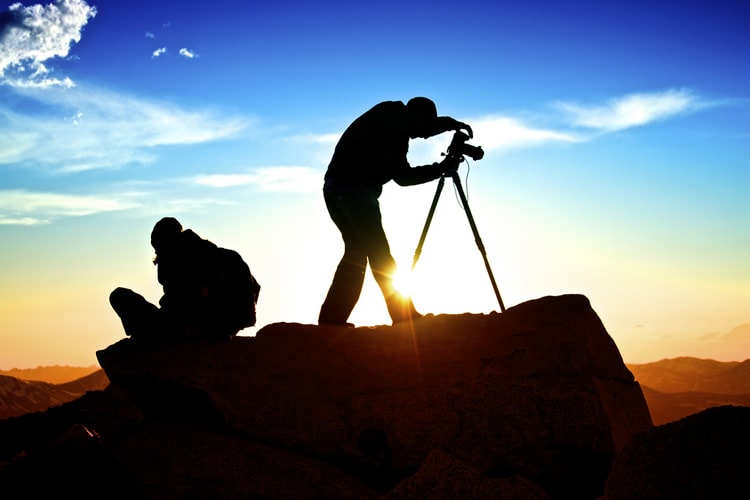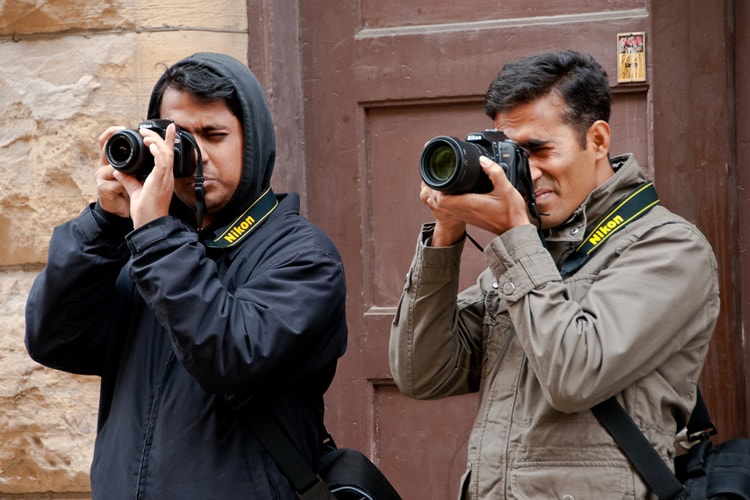How To Collaborate Seamlessly With Other Photographers
In photography as with many other areas in life, working with others is inevitable. Collaborations take place left and right because they are great for helping careers along, great for personal development, and great for networking. In short, the more you collaborate, the better you’ll do in your photography career.
When you collaborate, you’re really just dealing with other people, so it definitely helps to polish up on your people skills when you work together on a project with a fellow photographer. This is what this article will cover: how you can get the most out of any collaboration in the photography industry.

photo by Zach Dischner
Give Back to Other Photographers Who Still Have Much to Learn
People who hear the word “collaboration” often assume that it means a partnership or a project on which two people of equal skill are working together. While that’s one definition of it for sure, it’s not the only way to approach a collaboration.
If you’ve been around photography for a while, consider collaborating with less knowledgeable photographers by teaching them some of your skills. Don’t be selfishly concerned about increasing the pool of competition by doing this. After all, technical skills only go so far and don’t make one a good photographer.
Some suggestions for giving back to those up-and-coming photographers include taking them on a photo walk, putting on a workshop at your local college, and even writing a photography article like this. All are very valid ways of helping out those photographers who are just learning the ropes of this art form.
Be a Great Listener
Listening skills are talked about extremely frequently in all aspects of life, both professionally and personally. And with good reason. You can’t collaborate effectively without developing sharp listening skills that empower you to understand where another person’s coming from.
This applies very much to photography collaborations. Picture yourself, for a moment, working on a project with another photographer where you’re having trouble getting your subjects or models to pose in just the right way. You’re frustrated, but you’re fellow photographer’s even more frustrated because he’s sick and tired of them refusing to take direction well from him.
However, you’ve listened to your collaborator well enough from working together previously already to understand what he expects from his subjects, and you see exactly where he’s coming from, whereas the models don’t. In such a situation, you can reap the rewards of your great listening skills by playing intermediary and helping the models understand exactly what your collaborator expects of them.
The end result: The project is completed on time, and everyone’s happy… and it’s all because you took the time to listen well.
Actually Create a Work of Art Together
This is, of course, what most people think of when they hear the word “collaboration.” There is a multitude of ways in which you and a fellow photographer can create something truly special together. Here’s a hint: Begin by thinking way outside the box for inspiration in this pursuit.
For instance, you can shoot an ongoing photo documentary of whatever you choose, just so long as you regularly keep shooting the same scene or environment over a period of time. The ideas for this are endless, and local events are definitely well-suited. You have local festivals, parks, nightlife, etc…, at your disposal.
Another idea is a collaboration for urban decay photography. That’s where you go around to abandoned buildings… and shoot their evocative character. Since this type of collaboration can be a bit risky because of the dilapidated environments, you’ll probably have to collaborate with a few different photographers because you’ll want to bring along a group to a location… just to increase safety.

photo by Ashraful Kadir
Share Your Equipment
Another straightforward way to collaborate, sharing your equipment with fellow photographers also builds bonds, so it goes beyond a mere collaboration. When you share equipment, you’ll often be doing your fellow photographers a favor since they won’t need to shell out cash for new gear, especially if it’s expensive, and they only need it for one time.
The benefit of sharing your equipment is that you’ll get back as good as you’re giving, too. When your fellow photographer reciprocates, you’ll immediately be exposed to a bigger and better array of gear and equipment, which provides you with a chance to try out new shoots, as well as to learn about new tools. We call that a definite win for both parties involved.
Communicate Effectively With Fellow Photographers
A big part of collaboration is also giving and taking critique. That’s where good communication enters… the picture!
It’s quite common for photographers to exchange critiques on their various shots with each other. That kind of exchange fosters healthy growth because, to get better as a photographer, you obviously need a fresh pair of eyes looking over your work. The same goes for anyone else.
When you learn to effectively communicate your critiques to your collaborator on the same project – for example, his lighting is poor, or his subject’s pose could use a better angle – you’re able to persuade him to change things around and try something better. That in turn invites critique of your work, which you also need to spot imperfections that you maybe wouldn’t if you just looked at your own work with biased eyes.
Collaboration Should Be a Two-Way Street
Collaboration, when done properly, should be a mutually beneficial arrangement that provides benefits for you and your fellow photographers. By collaborating with others, you get to learn, improve yourself, and help them raise their art form as well. Look at it as a very healthy, creative way to inspire and be inspired while working on something very interesting.
The more you collaborate with others, the more you’ll also make connections, which is always a good thing to have. The more people – and you can also collaborate with other creative types, not just fellow photographers – you work with, the more your name gets out there, where it counts.
There’s really no downside to collaboration that we can see. So don’t delay any longer – throw yourself out there to start working on a joint project today.
